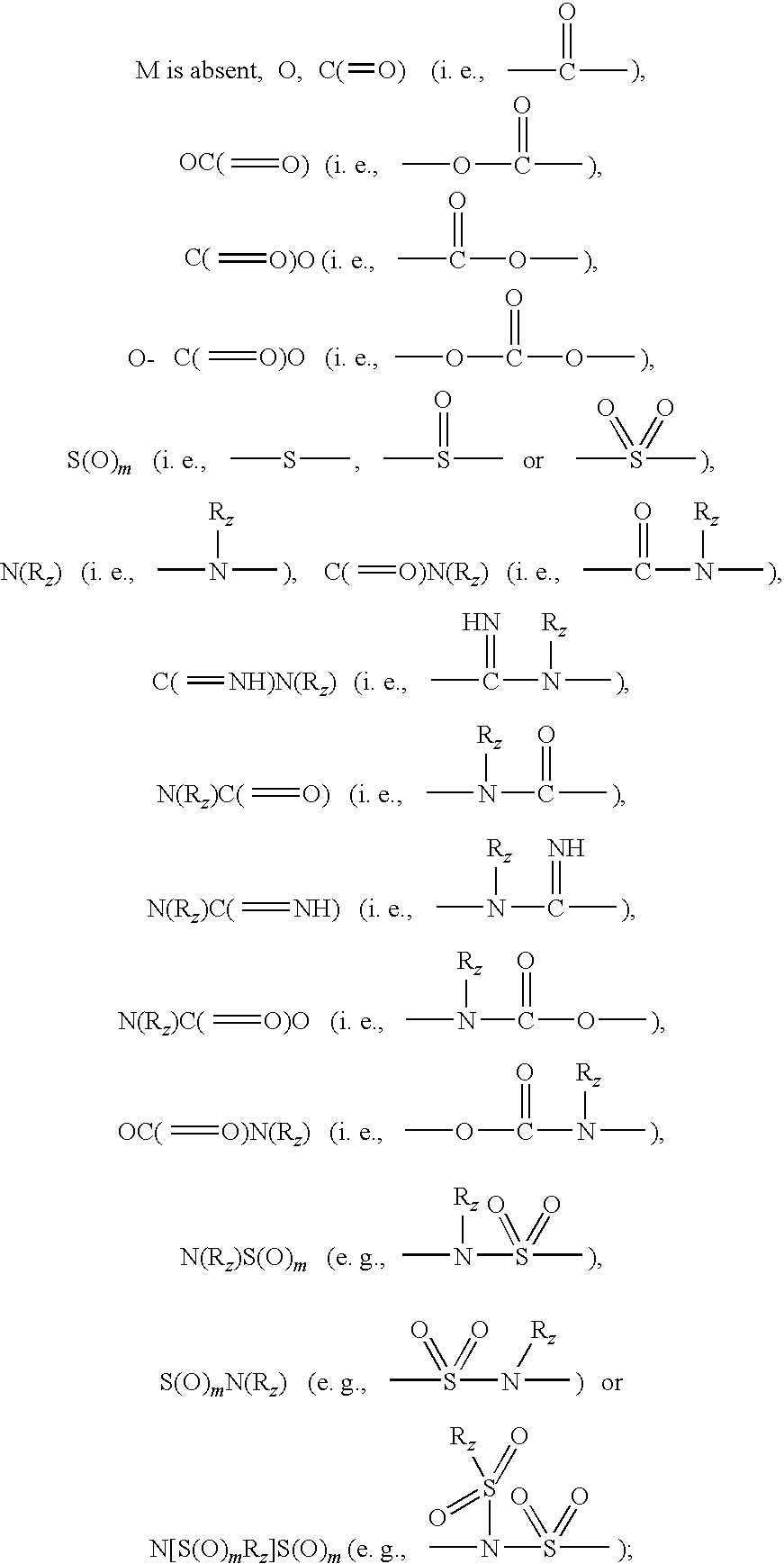Diaryl Ureas as CB1 Antagonists
a technology of diaryl urea and cb1 antagonist, which is applied in the field of diaryl urea, can solve the problems of increased likelihood, limited efficacy of treatment programs focusing on behavior modification, and harmful and costly effects, and achieve the effect of suppressing appeti
- Summary
- Abstract
- Description
- Claims
- Application Information
AI Technical Summary
Benefits of technology
Problems solved by technology
Method used
Image
Examples
example 1
Preparation of Representative CB1 Antagonists
[0197]This Example illustrates the preparation of the representative diaryl urea N,N′-bis[4-(difluoromethoxy)phenyl]urea.
[0198]A solution of 4-difluoromethoxyaniline (258 mg, 1.62 mmol) and 4-difluoromethoxyphenyl isocyanate (300 mg, 1.62 mmol) in toluene (8.1 mL) is heated at 70° C. for 1.5 h. The resulting white solid is collected by suction filtration and dried with suction for 30 min to obtain N,N′-bis[4-(difluoromethoxy)phenyl]urea as a white solid. 1H NMR: (CD3OD) 7.45 (dd, 4H), 7.09 (dd, 4H), 6.91 (dt, 2H, J1=56 Hz).
example 2
High Speed Synthesis of Representative CB1 Antagonists
[0199]This Example illustrates the high speed synthesis of representative diaryl ureas.
Protocol A.
[0200]
[0201]Aryl isocyanate (0.15 mL of 0.2 M in toluene) is added to a reaction vial followed by aryl amine (0.1 mL of 0.2M in toluene). The reaction vessel is sealed and heated at 70° C. with agitation for 16 h. A solution of N-(3-aminopropyl)morpholine (0.5 mL of 0.2 M in ethyl acetate) is added and the reaction is heated at 70° C. for 1 h. The reaction is cooled, diluted with ethyl acetate (0.3 mL) and eluted through a silica gel SPE cartridge with ethyl acetate (3.0 mL). The eluent is evaporated, weighed and diluted to a concentration of 10 mM in DMSO. Purity is assessed using LC / MS.
Protocol B (Curtius Rearrangement).
[0202]
[0203]To a solution of aryl carboxylic acid (0.15 mL of 0.2 M in toluene / 5% vv DIEA) is added diphenylphosphoryl azide (0.12 mL of 2M in toluene). The reaction vessel is sealed and heated at 80° C. for 4 h wit...
example 3
Additional Representative CB1 Antagonists
[0204]Using routine modifications, the starting materials may be varied and additional steps employed to produce other compounds provided herein. Compounds listed in Tables I-III are prepared using such methods. A “*” in the column headed “IC50” indicates that the IC50 at CB1, determined as described in Example 8, herein, is 2 micromolar or less. “Ret. time” or “R.T.” is the retention time in minutes and mass spectroscopy data (MS) is generated as described above and is presented as M+1.
TABLE IRepresentative CB1 AntagonistsRet.MSCompoundNametime(M + 1)IC501N-[4-(difluoromethoxy)phenyl]- N′-(4-propylphenyl)urea1.35321.12N-[4-(difluoromethoxy)phenyl]- N′-(4-propoxyphenyl)urea1.31337.13N-[4-(difluoromethoxy)phenyl]- N′-(3-isopropoxyphenyl)urea1.3337.14N,N′-bis[4- (difluoromethoxy)phenyl]urea1.28345.1*5N-[4-(difluoromethoxy)phenyl]- N′-(4-ethylphenyl)urea1.31307.1*6N-[4-(difluoromethoxy)-3- methoxyphenyl]-N′-[4- (difluoromethoxy)phenyl]urea1.2837...
PUM
| Property | Measurement | Unit |
|---|---|---|
| Volume | aaaaa | aaaaa |
| Volume | aaaaa | aaaaa |
| Volume | aaaaa | aaaaa |
Abstract
Description
Claims
Application Information
 Login to View More
Login to View More - R&D
- Intellectual Property
- Life Sciences
- Materials
- Tech Scout
- Unparalleled Data Quality
- Higher Quality Content
- 60% Fewer Hallucinations
Browse by: Latest US Patents, China's latest patents, Technical Efficacy Thesaurus, Application Domain, Technology Topic, Popular Technical Reports.
© 2025 PatSnap. All rights reserved.Legal|Privacy policy|Modern Slavery Act Transparency Statement|Sitemap|About US| Contact US: help@patsnap.com



